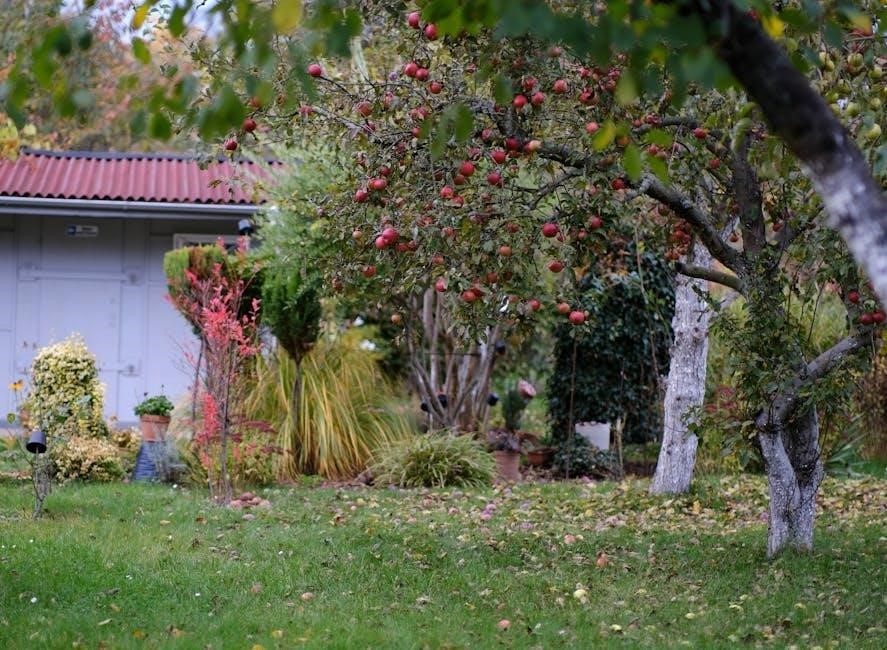suncast 7×7 shed assembly instructions
Suncast 7×7 Shed Assembly Instructions: A Comprehensive Plan
This guide provides detailed steps for assembling your Suncast 7×7 shed‚ covering foundation preparation‚ component identification‚ and final finishing touches for a durable structure.
Congratulations on choosing a Suncast 7×7 shed for your storage needs! This shed offers a robust and versatile solution for organizing outdoor equipment‚ garden tools‚ or seasonal items. Before you begin‚ understand that proper assembly is crucial for the shed’s longevity and stability.
This comprehensive guide will walk you through each stage‚ from foundation preparation to final adjustments. Remember to check local building codes and permit requirements prior to construction. A level foundation‚ whether concrete or wood‚ is absolutely essential for a successful build.
Before You Begin: Important Considerations
Prior to commencing assembly‚ several key factors demand attention. Firstly‚ verify local building codes and permit requirements – compliance is essential to avoid potential issues. Secondly‚ a solid‚ level foundation is non-negotiable; choose between concrete or a well-constructed wood base.
Ensure you have adequate space and a clear work area. Finally‚ confirm browser compatibility for accessing online manuals and resources. Outdated browsers may hinder your ability to download crucial documentation. Careful planning and preparation will streamline the entire process.

Local Building Codes and Permits
Before initiating construction‚ contacting your local building code official is paramount. Regulations vary significantly by location‚ dictating permissible shed sizes‚ setbacks from property lines‚ and foundation requirements. Failing to secure necessary permits can result in fines or mandated disassembly.
Inquire about height restrictions‚ material specifications‚ and any specific guidelines for outdoor structures. Documentation of approved permits should be readily available during the assembly process and for future reference. Proactive compliance ensures a stress-free build.
Foundation Requirements: Leveling and Stability
A level and robust foundation is absolutely critical for your Suncast 7×7 shed’s longevity and structural integrity. Uneven ground will cause alignment issues‚ door malfunctions‚ and potential roof leaks. Concrete or a well-constructed wood foundation are recommended‚ ensuring flatness across the entire shed footprint.
Thoroughly compact the ground before foundation construction. Utilize a level to verify consistent flatness. Stability is paramount; the foundation must prevent shifting or settling over time‚ safeguarding your investment and stored contents.
Unboxing and Inventory
Carefully unpack all components of your Suncast 7×7 shed‚ taking care not to damage any parts during the process. Immediately verify the contents against the provided parts list to ensure everything is present. Identifying each component – walls‚ roof panels‚ floor sections – before you begin will streamline assembly.
Missing parts can significantly delay the project‚ so address any discrepancies promptly. Familiarize yourself with the hardware; screws‚ bolts‚ and connectors. Organizing these items will save time and frustration during construction.
Parts List Verification
Thoroughly compare all received items against the detailed parts list included in your Suncast 7×7 shed packaging. Confirm the quantity of each component – wall panels‚ roof sections‚ floor boards‚ hardware packs – matches the documentation precisely. Note any shortages or damaged pieces immediately.
Contact the retailer or Suncast customer support to report discrepancies and arrange for replacements. Accurate verification prevents delays and ensures a smooth assembly process. Document any issues with photos for efficient communication.
Identifying Components: Walls‚ Roof‚ Floor
Familiarize yourself with each component before starting assembly. Distinguish between side‚ front‚ and back wall panels – often labeled or differing in window/door openings. Identify roof panels‚ noting any specific orientation requirements.
Separate floor panels and supporting beams. Hardware packs are typically categorized; identify those for each stage (floor‚ walls‚ roof). Refer to the assembly manual’s diagrams for visual confirmation of each part. Proper identification streamlines the building process and minimizes errors.

Foundation Preparation
A solid foundation is crucial for shed stability and longevity. Choose between concrete or wood foundations‚ ensuring compliance with local building codes. Concrete requires pouring a level pad‚ while wood involves constructing a sturdy frame.

Regardless of the material‚ the foundation must be perfectly level across the entire 7×7 footprint. Improper leveling will cause alignment issues during assembly. Ensure adequate drainage to prevent water damage. Prior to construction‚ verify local regulations regarding permits.
Concrete Foundation Guidelines
For a concrete foundation‚ excavate an area slightly larger than 7×7 feet to allow for formwork. Pour a concrete slab at least 4 inches thick‚ reinforced with wire mesh or rebar for added strength. Ensure the surface is perfectly level using a spirit level and screed board.
Allow the concrete to cure completely – typically 7 days – before beginning shed assembly. Proper curing prevents cracking and ensures a stable base. Consider adding a vapor barrier beneath the slab to mitigate moisture issues. Check local codes for specific depth requirements.
Wood Foundation Construction
If opting for a wood foundation‚ use pressure-treated lumber to resist rot and insect damage. Construct a rectangular frame‚ ensuring square corners and level surfaces. Employ 4×4 or 6×6 posts as supports‚ spaced appropriately around the perimeter and internally.
Elevate the frame slightly off the ground using concrete blocks or gravel to promote airflow and prevent moisture buildup; Securely fasten the lumber with galvanized screws or nails. Verify the foundation is perfectly level before proceeding with floor assembly‚ addressing any inconsistencies.
Floor Frame Assembly
Begin by assembling the floor supports‚ typically constructed from pressure-treated lumber. Ensure accurate measurements and secure connections using galvanized hardware. Carefully align the supports to create a robust and level base for the shed floor. Next‚ attach the floor panels to the assembled supports.
Utilize appropriate screws or nails‚ ensuring they are flush with the surface to prevent tripping hazards. Double-check the alignment of the panels and supports‚ creating a solid and even floor foundation. Proper floor frame assembly is crucial for overall shed stability.
Assembling the Floor Supports
Start by laying out the floor support beams according to the manual’s specifications‚ typically using pressure-treated lumber for ground contact. Ensure precise measurements and square corners for a stable foundation. Connect the beams using galvanized screws or brackets‚ providing robust and weather-resistant joints.
Reinforce corners with metal plates for added strength. Verify the assembled frame is level before proceeding‚ adjusting as needed. A well-constructed floor support system is vital for preventing future structural issues and ensuring a long-lasting shed.
Attaching the Floor Panels
Carefully position the floor panels onto the assembled floor support frame‚ ensuring they align correctly with the edges. Secure the panels using the provided screws‚ spacing them evenly for uniform support. Avoid over-tightening‚ which could damage the panel material.
Check for any gaps between panels and address them with shims if necessary. A solid and level floor is crucial for the shed’s overall stability. Confirm all panels are firmly attached before moving on to the wall assembly stage.
Wall Panel Assembly
Begin by laying out the components for each wall – side‚ front‚ and back – on a flat‚ protected surface. Carefully connect the wall sections‚ following the diagrams in the assembly manual. Utilize the provided hardware‚ ensuring proper alignment and secure fastening.
Pay close attention to the placement of window and door openings‚ if applicable. Double-check the squareness of each assembled wall before proceeding. Proper wall assembly is fundamental for a structurally sound shed.
Assembling the Side Walls
Start by laying out the side wall panels‚ identifying the top and bottom edges. Connect the panels using the provided connectors and screws‚ ensuring a flush and secure fit. Refer to the manual’s diagrams for correct orientation and hardware placement;
Reinforce the corners with additional connectors for added stability. Verify the wall’s squareness using a carpenter’s square before fully tightening all fasteners. Accurate side wall assembly is crucial for overall shed alignment.

Assembling the Front and Back Walls
Begin by identifying the front and back wall panels‚ noting the pre-drilled holes for the door and any windows. Connect the panels using the provided connectors and screws‚ ensuring a tight and flush connection. Pay close attention to the orientation of these panels‚ as they are not interchangeable.
Reinforce the corners and around the door/window openings with extra connectors. Double-check for squareness before fully tightening all screws. Proper assembly of these walls is vital for structural integrity and door functionality.
Wall Attachment and Stabilization
Carefully lift and position the assembled side walls onto the prepared floor frame‚ aligning them with the edges. Secure the walls to the floor frame using the appropriate screws and connectors‚ ensuring a firm attachment at each point. Repeat this process for the front and back walls.
Utilize a level to verify wall squareness and alignment‚ making adjustments as needed before fully tightening all fasteners. Bracing may be required temporarily to maintain stability during this stage. Proper stabilization is crucial for a structurally sound shed.
Connecting Walls to the Floor Frame
Begin by carefully positioning each wall panel onto the floor frame‚ ensuring precise alignment with the edges. Utilize the provided screws or fasteners to connect the wall panels to the floor frame‚ spacing them according to the assembly manual’s specifications. Ensure each fastener is securely tightened‚ but avoid over-tightening‚ which could damage the materials.
Double-check the connection points for stability and proper alignment. A solid connection between the walls and the floor frame is fundamental for the shed’s overall structural integrity and resistance to weather elements.
Ensuring Wall Squareness and Alignment
Critical to a stable shed is verifying wall squareness. Use a carpenter’s square or measuring tape to confirm 90-degree angles at each corner. Adjust the wall panels as needed‚ gently shifting them until squareness is achieved. Proper alignment prevents future issues like door or window misalignment.
Bracing the walls temporarily with supports can aid in maintaining squareness during the fastening process. Regularly check alignment throughout the wall attachment phase‚ making minor adjustments as you go for a structurally sound result.
Roof Frame Installation
Begin by assembling the roof supports according to the manual’s diagrams. Carefully connect these supports‚ ensuring all joints are secure and aligned. Next‚ lift the assembled roof frame onto the walls‚ positioning it precisely. Attach the roof supports to the walls using the provided hardware‚ following the specified pattern;
Verify the roof frame is level and securely fastened before proceeding. Proper installation of the roof frame is crucial for the shed’s overall stability and weather resistance.
Assembling the Roof Supports
Start by laying out all roof support components‚ referencing the parts list to ensure you have everything needed. Connect the rafters and ridge beam according to the assembly manual’s detailed illustrations. Utilize the provided screws or bolts‚ tightening them securely to create a rigid frame.
Double-check all connections for stability before moving onto the next step. Accurate assembly of the roof supports is vital for a structurally sound roof‚ capable of withstanding weather elements.
Attaching the Roof Supports to the Walls
Carefully lift the assembled roof support frame and position it onto the top of the shed walls‚ ensuring proper alignment with the wall edges. Secure the roof supports to the walls using the designated fasteners – screws or bolts – as indicated in the manual.

Pay close attention to the specified attachment points for optimal stability. Confirm that the roof frame is level and firmly connected to all walls before proceeding‚ guaranteeing a secure and weather-resistant shed structure.
Roofing Panel Installation
Begin placing the roofing panels onto the assembled roof frame‚ ensuring they overlap correctly according to the manual’s instructions. Secure each panel using the provided screws or fasteners‚ tightening them firmly but avoiding over-tightening to prevent damage.
Pay attention to the recommended overlap to ensure a watertight seal‚ preventing leaks during inclement weather. Proper sealing around the edges and any penetrations is crucial for long-term durability and protection of your shed’s contents.
Placing and Securing the Roof Panels
Carefully lift each roofing panel into position‚ aligning it with the roof frame supports. Ensure the panel sits flush against the frame before securing it with the designated screws. Start at one edge and work your way across‚ maintaining consistent spacing between fasteners.
Avoid forcing the panels; if resistance is met‚ double-check alignment. Proper securing prevents wind uplift and water intrusion‚ safeguarding your stored items. Refer to the manual for specific screw placement guidelines for optimal stability.
Overlap and Sealing Considerations
Ensure adequate overlap between roofing panels to prevent water penetration‚ typically as specified in the assembly manual. Apply a weatherproof sealant along all seams and edges where panels meet‚ including around vents or protrusions.
This creates a watertight barrier‚ protecting the shed’s contents from the elements. Inspect sealant application carefully‚ ensuring complete coverage without gaps. Regularly check the sealant for cracks or deterioration and reapply as needed to maintain weather resistance.
Door Installation
Begin with assembling the door frame‚ ensuring squareness for smooth operation. Carefully hang the door within the frame‚ utilizing hinges and appropriate hardware. Adjust the door alignment for proper closure and latching‚ addressing any gaps or friction.
Verify the door swings freely and locks securely. Consider adding weather stripping around the door perimeter to enhance insulation and prevent drafts. Proper installation ensures security and protects shed contents from weather exposure.
Door Frame Assembly
Start by laying out the door frame components on a flat‚ protected surface. Connect the side and top pieces using screws or provided fasteners‚ ensuring a square and rigid structure. Double-check measurements to confirm the frame fits the designated door opening precisely.
Reinforce corners with brackets if included‚ adding stability and preventing warping. Pre-drill holes to avoid splitting the frame material during assembly. A well-assembled door frame is crucial for proper door function and overall shed security.
Hanging and Adjusting the Door
Carefully lift the assembled door and align it with the door frame opening. Attach hinges to both the door and the frame‚ ensuring proper alignment for smooth operation. Use shims if necessary to achieve a level and even fit‚ preventing binding or rubbing.
Test the door’s swing and adjust hinge placement for optimal closure. Tighten all screws securely‚ but avoid over-tightening‚ which could damage the frame or door. Fine-tune adjustments until the door closes properly and latches securely‚ ensuring weather protection.
Window Installation (If Applicable)
If your Suncast 7×7 shed model includes windows‚ carefully unpack and inspect all window components. Position the window frame within the designated opening on the wall panel‚ ensuring a snug and secure fit. Apply a bead of exterior-grade sealant around the window frame to prevent water infiltration.

Secure the window frame to the wall panel using appropriate screws‚ following the manufacturer’s instructions. Test the window’s operation‚ ensuring it opens and closes smoothly. Address any alignment issues before fully securing the window‚ guaranteeing weather resistance.
Finishing Touches and Trim
Once the main structure is assembled‚ apply trim pieces around the door frame and windows (if applicable) for a polished look. Ensure all trim is securely fastened with appropriate screws or nails‚ creating a weather-resistant seal. Inspect all seams and joints‚ applying exterior-grade caulk where necessary;
Consider adding shelving or organizational systems to maximize storage space within the shed. Clean the exterior of the shed with a mild detergent and water‚ removing any debris. Regular maintenance will prolong the life and appearance of your Suncast 7×7 shed.
Shed Maintenance
To ensure longevity‚ regularly clean your Suncast shed with mild detergent and water‚ removing dirt and debris. Inspect the roof and walls annually for any signs of damage or leaks‚ promptly addressing any issues. Check door and window seals for weather tightness‚ reapplying caulk as needed.
Periodically inspect the foundation for settling or instability‚ making adjustments if necessary. Protect the shed from harsh weather conditions with appropriate treatments or covers. Proactive maintenance prevents costly repairs and preserves your investment.
Cleaning and Weather Protection
Regularly wash your Suncast shed using a gentle detergent and water solution to remove accumulated dirt‚ mildew‚ and debris. Avoid abrasive cleaners that could damage the resin surface. Inspect for any signs of mold or algae growth‚ treating affected areas promptly.
For enhanced weather protection‚ consider applying a UV protectant spray annually to prevent fading and cracking. Ensure proper drainage around the shed’s base to avoid water damage. Periodically check and reseal any gaps or cracks to maintain a watertight enclosure.
Periodic Inspection and Repairs
Conduct routine inspections of your Suncast shed at least twice a year‚ focusing on the roof‚ walls‚ and door for any signs of damage. Check for loose screws‚ cracks in the resin‚ or warping of panels. Address any issues promptly to prevent further deterioration.
Tighten all fasteners and replace any damaged components immediately. Inspect the door hinges and latch‚ adjusting or replacing them as needed for smooth operation. Ensure the foundation remains level and stable‚ making repairs if settling occurs; Maintain a well-kept shed for longevity.
Troubleshooting Common Assembly Issues
If walls don’t align‚ re-check the floor frame’s levelness and squareness – adjustments here are crucial. For missing parts‚ consult your parts list and contact Suncast customer support for replacements. Difficulty with door alignment? Loosen hinges‚ adjust the door‚ and re-tighten.
Roof panel overlap issues often stem from incorrect sequencing; review the manual. Stripped screw holes can be repaired with wood glue and toothpicks. Remember to double-check each step against the manual before forcing anything – patience is key!

Safety Precautions During Assembly
Always wear safety glasses to protect your eyes from debris during cutting and drilling. Gloves are recommended to prevent splinters and hand injuries while handling panels. Ensure a clear‚ level workspace free of obstructions to avoid trips and falls.
When using power tools‚ follow manufacturer’s instructions carefully and disconnect power when not in use. Never work alone; have a helper assist with lifting heavier components. Be mindful of overhead power lines and avoid assembly during inclement weather.
Tools Required for Assembly
Essential tools include a Phillips head screwdriver‚ a rubber mallet for gentle panel alignment‚ and a level to ensure a stable foundation. A power drill with various bits will expedite screw installation. Measuring tape and a square are crucial for accurate alignment.
Consider a circular saw for any necessary panel adjustments‚ and safety glasses are a must. A utility knife helps with packaging and trimming. Gloves protect hands‚ and a ladder may be needed for roof panel installation.
Downloading Assembly Manuals

Accessing the correct assembly manual is vital for a smooth build. Visit shedsforlessdirect.com to find the Suncast BMS7791 manual‚ released April 25‚ 2017. Alternatively‚ search for the Suncast BMS7702 Vista model guide for similar instructions.
Be prepared to enter a code from an image to unlock the download‚ ensuring secure access. Manuals often include detailed diagrams and step-by-step guidance. Ensure your browser is up-to-date for optimal viewing and downloading capabilities‚ as older browsers may cause issues.
Suncast Sustainability Initiatives

Suncast is dedicated to a brighter‚ more sustainable future through responsible manufacturing practices. Their commitment extends to minimizing environmental impact throughout the product lifecycle‚ from material sourcing to production.
Choosing a Suncast shed supports these initiatives. The company actively explores innovative materials and processes to reduce waste and conserve resources. Learn more about their efforts on the official Suncast website‚ demonstrating their dedication to environmental stewardship and a greener planet.
Browser Compatibility and Website Access
For the optimal experience accessing assembly manuals and resources‚ Suncast recommends using an up-to-date web browser. If you encounter display issues or functionality problems‚ your browser may be outdated.
Consider upgrading to a modern browser to ensure full compatibility with the Suncast website. This will allow you to easily download instructions‚ view videos‚ and access support materials for your 7×7 shed assembly. A smooth online experience is crucial for a successful build!
Resources and Support
Suncast provides a wealth of resources to assist with your 7×7 shed assembly. Access downloadable assembly manuals directly from their website‚ often requiring solving a simple image-based code for secure access.
Additionally‚ a comprehensive playlist of assembly video tutorials is available on YouTube (link provided). For further assistance‚ explore the Suncast website for FAQs‚ troubleshooting guides‚ and warranty information. Don’t hesitate to contact Suncast’s customer support team for personalized help.
Assembly Video Tutorials (Link to Playlist)
Visual learners will benefit from the detailed assembly video tutorials available online. This playlist offers a step-by-step guide‚ demonstrating each stage of the Suncast 7×7 shed construction process.
The playlist covers everything from foundation preparation to roof panel installation and door adjustments. Access the full playlist here: Home Improvement Playlist. These videos are an invaluable resource for a smooth and successful assembly experience.
Warranty Information
Suncast stands behind the quality of its products‚ including the 7×7 shed. Specific warranty details vary depending on the model and date of purchase. Generally‚ the warranty covers defects in materials and workmanship under normal use.
It’s crucial to register your shed promptly after assembly to activate the warranty. Review the complete warranty documentation included with your shed or visit the Suncast website for detailed terms and conditions. Proper assembly‚ following the provided instructions‚ is essential for warranty validity.

